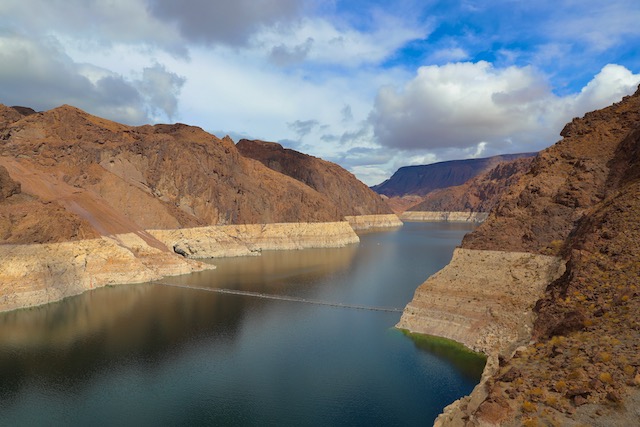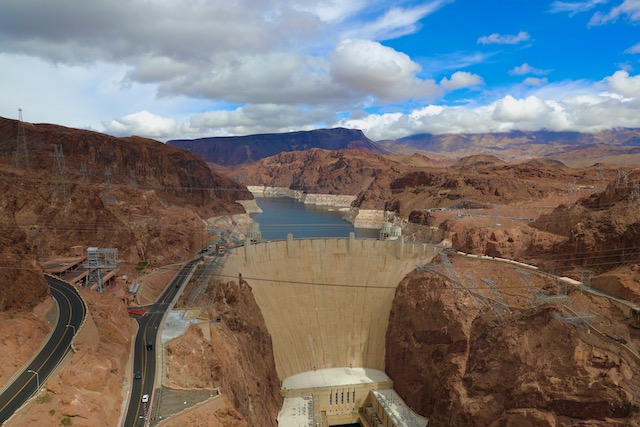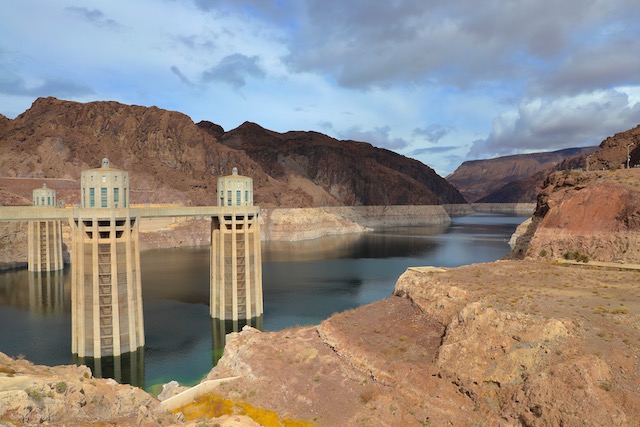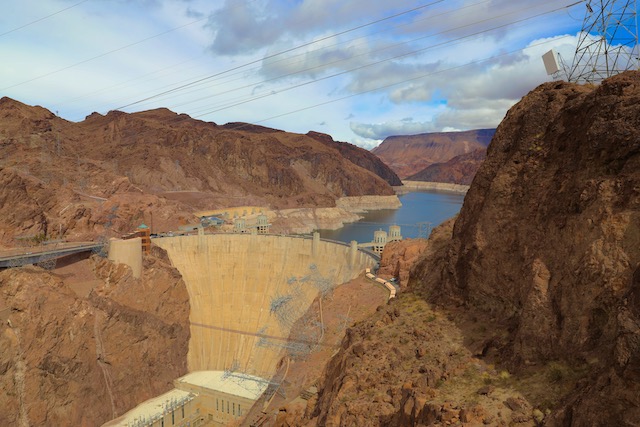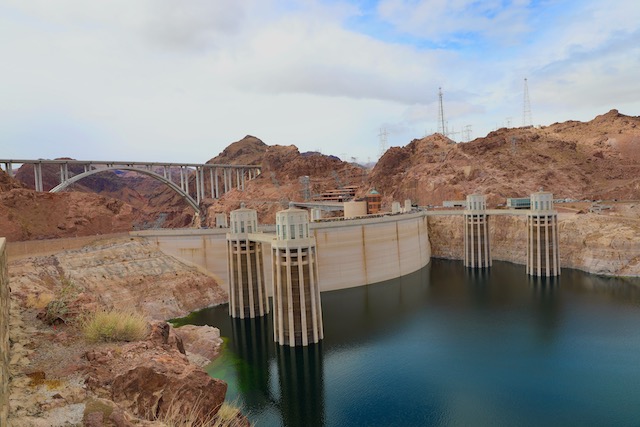Hoover Dam – Ring Around The Canyon
Severe Drought, Climate Emergency, & Growing Water Demand
We’re in the heart of Cadillac Desert! (see prior post on Glen Canyon dam)
While the media continues to be consumed by identity politics and Democrats continue to pursue Progressive Neoliberalism, President Biden’s new Secretary of Interior sure has her hands full.
AP News reports: August 4, 2020
CARSON CITY, Nev. (AP) — The white rings that wrap around two massive lakes in the U.S. West are a stark reminder of how water levels are dropping and a warning that the 40 million people who rely on the Colorado River face a much drier future.
Amid prolonged drought and climate change in a region that’s only getting thirstier, when that reckoning will arrive — and how much time remains to prepare for it — is still a guess.
The U.S. Bureau of Reclamation released projections Friday that suggest Lake Powell and Lake Mead will dip 16 feet (5 meters) and 5 feet (1.5 meters), respectively, in January from levels recorded a year earlier. Despite the dip, Lake Mead would stay above the threshold that triggers severe water cuts to cities and farms, giving officials throughout the Southwest more time to prepare for the future when the flow will slow.
“It’s at least a couple of decades until we’re saying, ‘We don’t have one more drop for the next person that comes here,’” said Ted Cooke, general manager of Central Arizona Project, the canal system that delivers river water. “But people certainly ought to be aware that water — the importation of a scarce commodity into a desert environment — is expensive and, with climate change, going to get even more expensive.”
The reckoning has arrived – it’s no longer “a guess”.
Despite the insanity from Mr. Cooke of the CAP – who is promoting growth in demand at a time when deep cuts to current users are about to be invoked – the reckoning has arrived.
Even the Wall Street money men are getting nervous:
A 2017 paper in the journal Water Resources Research, by Bradley Udall of Colorado State University and Jonathan Overpeck of the Colorado River Research Group, found that “As temperatures increase in the 21st century due to continued human emissions of greenhouse gasses, additional temperature‐induced flow losses [in the Colorado River] will occur.” Those losses could exceed 20% below the 20th-century average flow by mid‐century and 35% by 2100.
And they could be devastating to the region’s economy. According to a 2014 study that was produced by Arizona State University’s Seidman Research Institute and commissioned by Business for Water Stewardship, a non-profit organization, the Colorado River supports $1.4 trillion in annual economic activity and 16 million jobs across the seven states of the basin.
Way back in 2007, the US Department of Interior found:
The Colorado River Basin (Basin) is in the eighth year of drought – the worst eight year period in over a century of continuous recordkeeping. Reservoir elevations have declined over this period and the duration of this ongoing, historic drought is unknown. This is the first long-term drought in the modern history of the Colorado River, although climate experts and scientists suggest droughts of this severity have occurred in the past and are likely to occur in the future. The Colorado River provides water to two nations, and to users within seven western states. With over 27 million people relying on the Colorado River for drinking water in the United States, and over 3.5 million acres of farmland in production in the Basin, the Colorado River is the single most important natural resource in the Southwest. […]
Under these conditions, conflict over water is unsurprising and anticipated. Declining reservoir levels in the Basin led to interstate and inter-basin tensions. As the agency charged with management of the Colorado River, the Department of the Interior (Department) had not yet developed operational rules for the full range of operations at Lake Powell and Lake Mead because these types of low-reservoir conditions had simply not yet occurred.
Against this background, at the direction of the Secretary, the Department initiated a public process in May of 2005 to develop additional operational guidelines and tools to meet the challenges of the drought in the Basin. While water storage in the massive reservoirs afforded great protection against the drought, the Department set a goal to have detailed, objective operational tools in place by the end of 2007 in order to be ready to make informed operational decisions if the reservoirs continued to decline.
That led to the following plans and governing documents, for policy wonks only:
Severe drought conditions have triggered:
More specifically:
6. Based on the actual operating experience gained after the adoption of the 2007 Interim Guidelines and emerging scientific information regarding the increasing variability and anticipated decline in Colorado River flow volumes, the Parties recognize and acknowledge that those relying on water from the Colorado River System face increased individual and collective risk of temporary or prolonged interruptions in water supplies, with associated adverse impacts on the society, environment, and economy of the Colorado River Basin.Therefore, the Parties have agreed that it is necessary and beneficial to pursue additional actions beyond those contemplated in the 2007 Interim Guidelines to reduce the likelihood of reaching critical elevation levels in Lake Powell and Lake Mead through the Interim Period.
